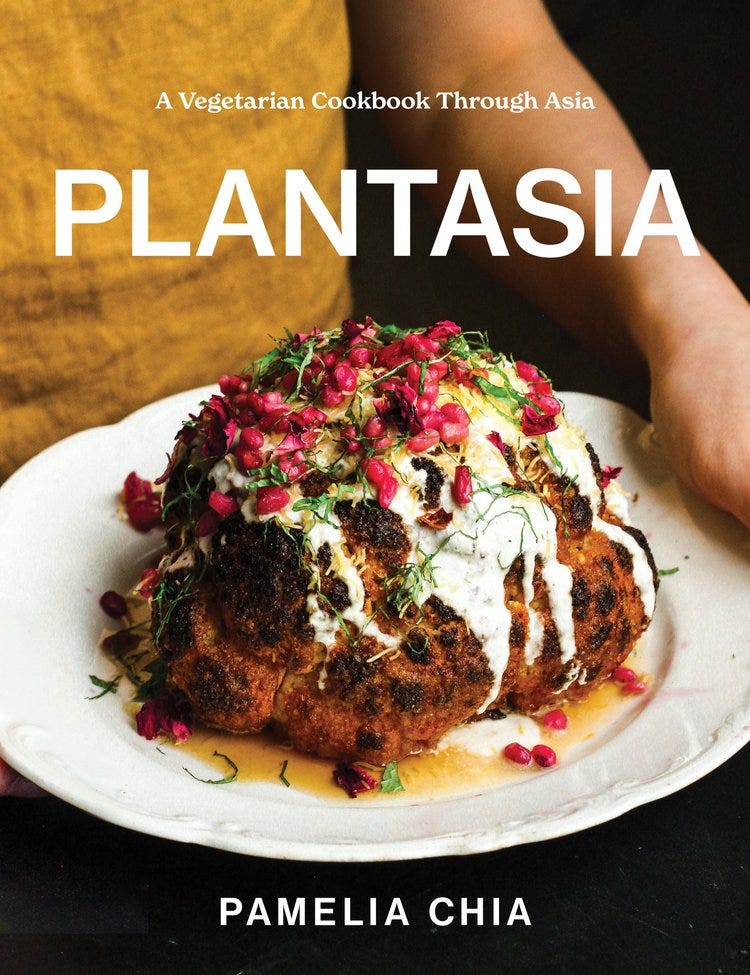Plantasia turns one 🎂
Part I: A recipe from my cookbook and a giveaway for melbourne subscribers!
✨ Welcome to Singapore Noodles, a newsletter dedicated to celebrating Asian culinary traditions and food cultures. Every Monday, you’ll be receiving a tasty mix of food history, stories, and recipes straight in your inbox. Archived recipes and other content can be found on the index. This newsletter is 100% reader-funded; each paid subscription supports the writing and research that goes into the newsletter, pays guest-writers, and gives you access to all content and recipes.
My second cookbook Plantasia: A Vegetarian Cookbook Through Asia just turned one, so this week’s newsletter is a two-part series. In the first part, available for all subscribers, I’ll be sharing a recipe — Butternut Squash Dengaku (P.240-241) — from Plantasia and take a little dive into the book. In a separate email exclusively for paid subscribers, I’ll take you behind the scenes of independently publishing cookbook and answer all of the questions that I’ve received since Plantasia’s launch. Thank you for being here and enjoy this week’s post. ✨
I’ve always loved cookbooks; they were how I learnt to cook in the first place. The impetus of writing cookbooks for me has always been to empower a younger generation of cooks like myself by sharing what I know in a clear, concise manner. My first cookbook Wet Market to Table: A Modern Approach to Fruit and Vegetables was, very much, written specifically with the young Singaporean in mind. This includes those who are intimidated by the wet market but eager to dip their toes into it; or those, like me, who have grown up with broad influences and want to cook with regional greens outside their traditional context.
Plantasia: A Vegetarian Cookbook Through Asia, published 4 years after my first cookbook, was written after I’d moved to Australia. For the first time, I was exposed to the impact of climate change up close and could no longer deny the impact that my formerly meat-heavy diet was having on the environment. I was inspired by how creative and thoughtful Australian chefs were in crafting vegetarian or vegan dishes, and how unafraid they were in fusing techniques or ingredients from Asia. Recognising how there hasn’t been a cookbook that championed vegetables from a broad Asian perspective, I wanted to go on a journey by digging deep into my Asian heritage and learning from chefs from other Asian backgrounds, and share what I’ve learnt with an international audience.
🌱 What is Plantasia about?
Though vegetarianism and veganism are often thought of as fads from the West, they are, in fact, rooted in the way Asians have approached eating for centuries. Plantasia takes readers on a journey that explores this rich history and the innovative, delicious ways in which Asians cook vegetables. Unlike many vegetarian cookbooks that rely on meat substitutes, I wanted to celebrate vegetables as the stars of each dish. In doing so, I hope to dispel the notion that vegetarian meals are second-rate alternatives for meat, and showcase how dynamic and satisfying vegetables can be.
🌱 What has been a highlight in creating Plantasia?
Working on the illustrations! The book features a total of 24 chefs, food writers, and home cooks with connections to different parts of Asia. The choice to use illustrations rather than photographs to depict them was a very intentional one — it allowed us to accentuate elements of different Asian food cultures through the art, and creates a consistent look throughout the book. It was a very collaborative process between me, the designer of the book Yong Wen Yeu, and illustrator Shreya Parasrampuria. We met very regularly over Zoom to refine each artwork and we all couldn’t be happier with the end result.
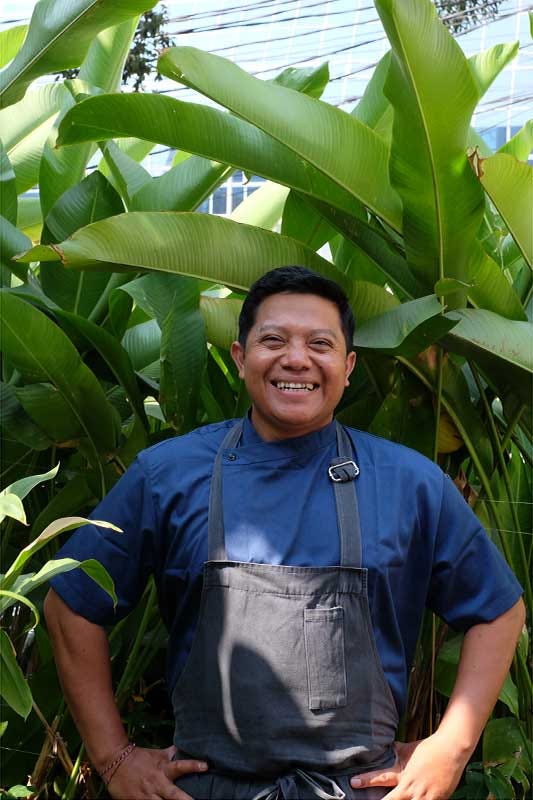
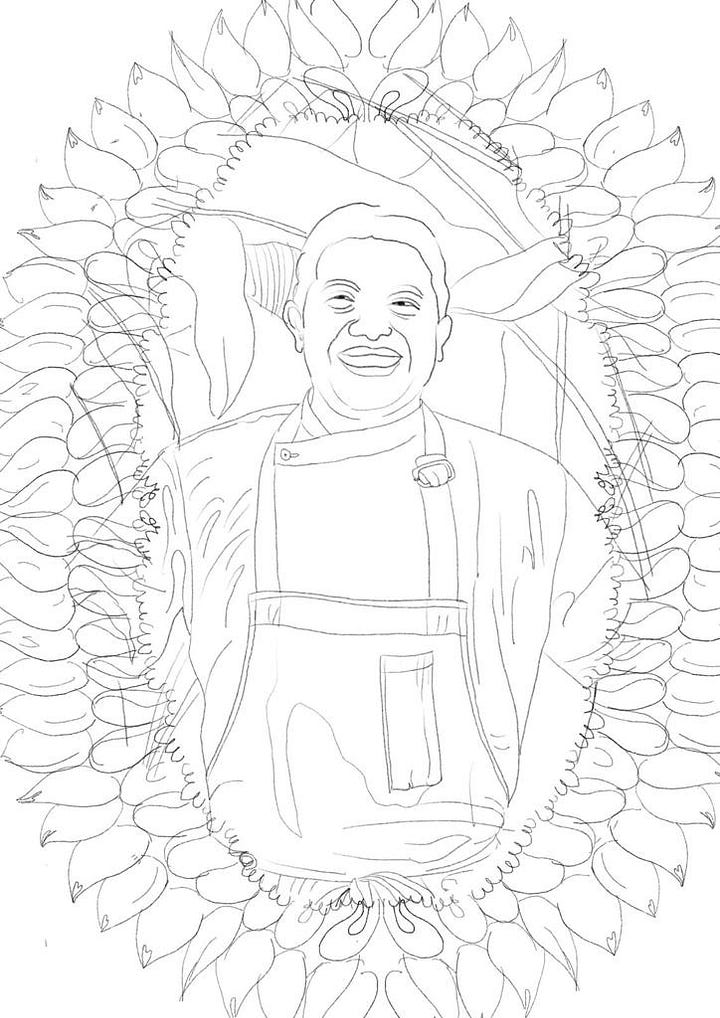
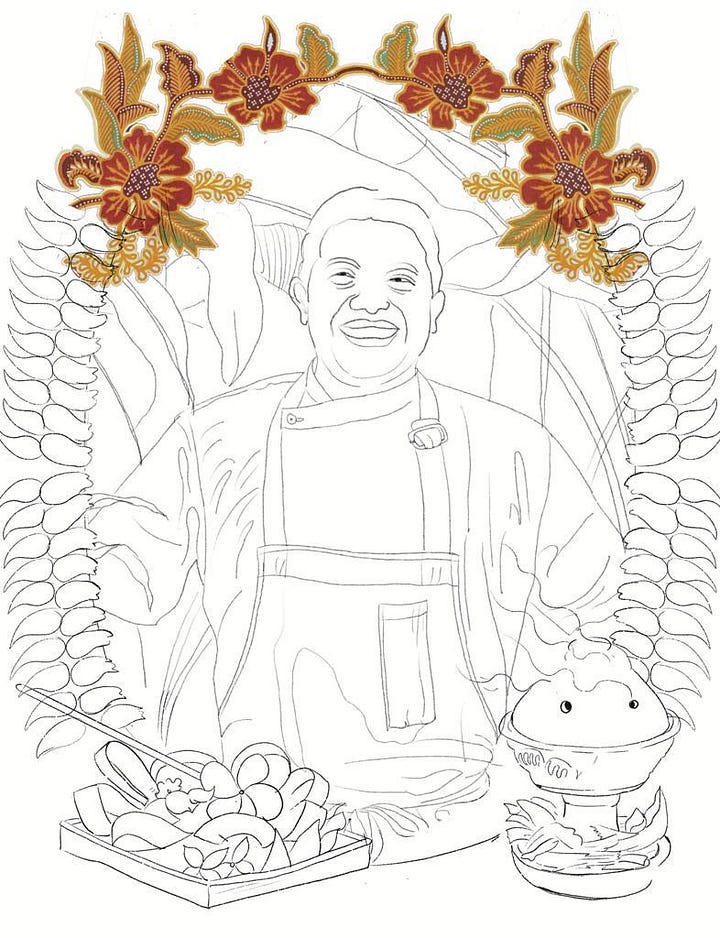
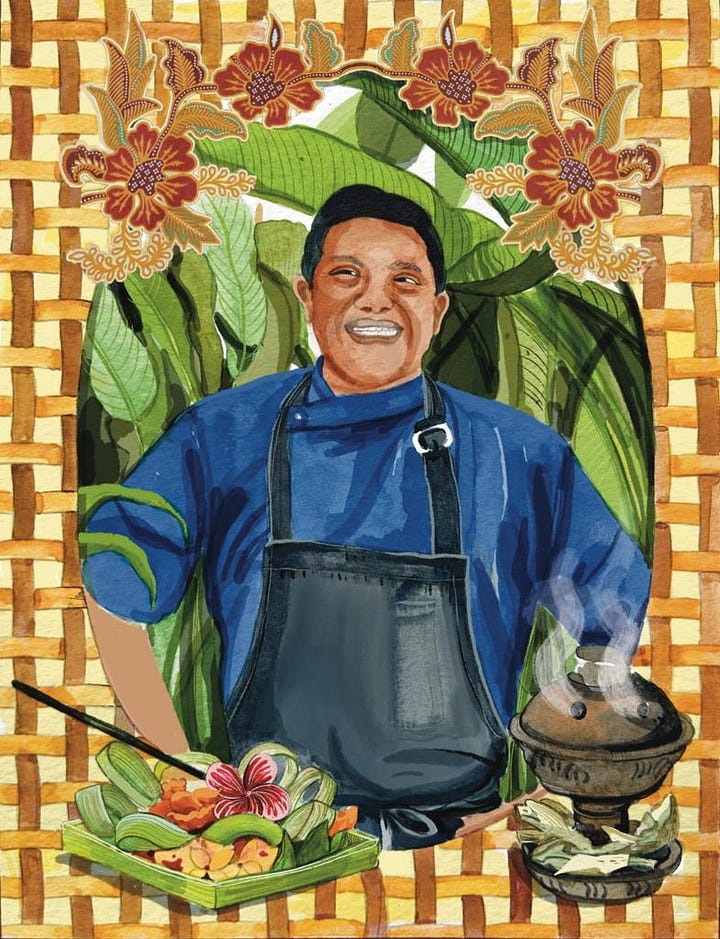
🌱 What is your favourite recipe to make?
There are a total of 88 recipes in Plantasia. I currently am teaching classes in the Netherlands and so far, some hits from the book amongst my students are the kohlrabi and carrot salad (P.26-27), hot butter mushrooms (P.148-149), and renghan reveya (P.102-103). It’s hard to pick a personal favourite, but if I had to pick, it would be tofu nanban (P.150-151) which I love making with sweet potato instead of tofu sometimes, grilled rice paper with tofu sisig (P.192-193), charred brussels sprouts with grapefruit and yuba (P.212-213), and mushroom ramen with fermented tofu broth (P. 112-113). My husband Wex’s favourite in the book is spanakopita with spiced ghee and fried onions (P.230-231), which works really well as a lunchbox treat. If you want an easy recipe to start with go for the butternut squash dengaku (P.240-241) at the bottom of this email.
🌱 Where can I find the ingredients to cook the recipes?
I get this question a lot. You would be able to cook most, if not all, of the recipes in this book if you have access to an Asian grocer. In fact, I developed the recipes in this book when I was living in the countryside (Daylesford, Australia), with the Asian grocer being a 30 minute-drive away. If you live in the Netherlands, check out Amazing Oriental, which has a branch in almost every city.
🌱 What are people saying about the book?
“This is a stunningly original book, rooted in a deep respect for Asian traditions, philosophies and ingredients and at the same time genuinely progressive in its approach. Pamelia’s extensive knowledge of cuisine has enabled her to contextualise her stories and vegetable-starring recipes in a way which demystifies and excites. The focus is on the pleasure-giving and nourishing value of plants rather than substitution or deprivation. Plantasia tantalises with gorgeous vegetables and innovative cooking methods, and I cannot wait to cook my way through the entire book.” - Helen Goh, co-author of Ottolenghi Sweet and columnist for Sydney Morning Herald/The Age
"This authoritative guide through Asian techniques and flavours will revolutionise your cooking. Brilliant, innovative and incredibly inspiring!" - Mandy Yin, owner and author of Sambal Shiok: The Malaysian Cookbook
“A thrilling collection of recipes from all over Asia. The flavours and colours of Pamelia Chia's recipes leap off the page.” - Fuchsia Dunlop, author of Every Grain of Rice: Simple Chinese Home Cooking
“I love everything about Plantasia, from the vibrant imagery, refreshing design, stories, sketches and most of all the beautifully written selection of glorious recipes. I want to cook it all and will happily turn vegetarian for months to do so!” - Karan Gokani, author of Hoppers: The Cookbook
🌱 Where can I get a copy?
You can order it directly from my website — Plantasia ships worldwide! Alternatively, you can find a full list of international stockists here.
🌽 Imperfect copies giveaway for Melbourne readers! Unfortunately, one of the tricky things about independently publishing a cookbook for the first time means that there will inevitably be unforeseen circumstances, such as books being damaged during their sea travels. I have 20 copies of my cookbook with very minor cover defects in Melbourne. If you’d like to grab one and can pick it up in the South Yarra area, please email me or leave me a message on the Subscriber Chat! I’d love to share these copies with newsletter subscribers so they don’t go to waste. I only ask that you spread the word about the book when you receive your copy 😊
Butternut squash dengaku
Dengaku (田楽) refers to a cooking method of grilling food with a savoury miso paste (dengaku miso/ 田楽味噌), dating back to 14th century Japan. I was introduced to the technique when Nobu Matsuhisa popularised it in his legendary black cod dish. Modern recipes for dengaku miso are quick, involving just a thorough mix of the ingredients before use. However, this was not quite the case at the Japanese cafe I used to work at. We would place a huge bowl of four ingredients — mirin, miso, sake and sugar — over a double boiler, allowing the mixture to caramelise gently over the course of lunch service to a thick paste. This produced a miso that was so complex in flavour that anything we roasted with it tasted delicious. It would serve you well to keep a jar in the fridge.
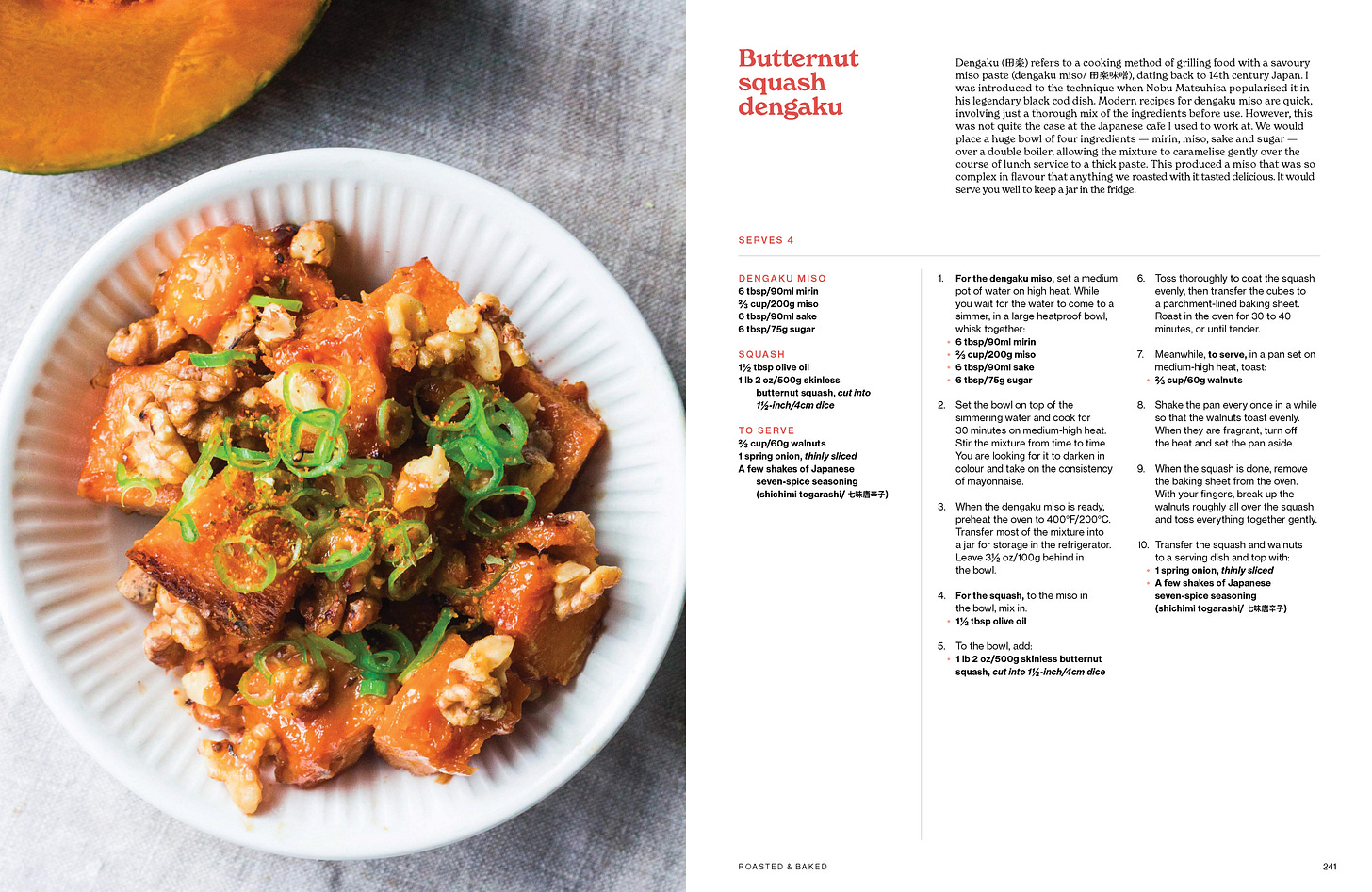
Makes 4 servings
90ml mirin
200g miso
90ml sake
75g sugar
1 1/2 tbsp olive oil
500g skinless butternut squash, cut into 4cm dice
60g walnuts
1 spring onion, thinly sliced
A few shakes of Japanese seven-spice seasoning (shichimi togarashi)
Set a medium pot of water on high heat. While you wait for the water to come to a simmer, in a large heatproof bowl, whisk together 90ml mirin, 200g miso, 90ml sake, and 75g sugar.
Set the bowl on top of the simmering water and cook for 30 minutes on medium-high heat. Stir the mixture from time to time. You are looking for it to darken in colour and take on the consistency of mayonnaise.
Preheat the oven to 200°C. Transfer most of the miso mixture into a jar for storage in the refrigerator. Leave 100g behind in the bowl.
To the miso in the bowl, mix in 1 1/2 tbsp olive oil. Add 500g skinless butternut squash (cut into 4cm dice). Toss thoroughly to coat the squash evenly, then transfer the cubes to a parchment-lined baking sheet. Roast in the oven for 30 to 40 minutes, or until tender.
Meanwhile, in a pan set over medium-high heat, toast 60g walnuts. Shake the pan every once in a while so that the walnuts toast evenly. When they are fragrant, turn off the heat and set the pan aside.
When the squash is done, remove the baking sheet from the oven. With your fingers, break up the walnuts roughly all over the squash and toss everything together gently. Transfer the squash and walnuts to a serving dish and top with 1 spring onion (thinly sliced) and a few shakes of Japanese seven-spice seasoning (shichimi togarashi).




